 Politics
Politics  Politics
Politics  Weird Stuff
Weird Stuff 10 Eggs-traordinarily Odd Eggs
 History
History 10 Desperate Last Stands That Ended in Victory
 Animals
Animals Ten Times It Rained Animals (Yes, Animals)
 Mysteries
Mysteries 10 Devastating Missing Child Cases That Remain Unsolved
 Creepy
Creepy 10 Scary Tales from the Middle Ages That’ll Keep You up at Night
 Humans
Humans 10 One-of-a-kind People the World Said Goodbye to in July 2024
 Movies and TV
Movies and TV 10 Holiday Movies Released at Odd Times of the Year
 Politics
Politics 10 Countries Where Religion and Politics Are Inseparable
 Weird Stuff
Weird Stuff 10 Freaky Times When Famous Body Parts Were Stolen
 Politics
Politics The 10 Most Bizarre Presidential Elections in Human History
 Weird Stuff
Weird Stuff 10 Eggs-traordinarily Odd Eggs
 History
History 10 Desperate Last Stands That Ended in Victory
Who's Behind Listverse?

Jamie Frater
Head Editor
Jamie founded Listverse due to an insatiable desire to share fascinating, obscure, and bizarre facts. He has been a guest speaker on numerous national radio and television stations and is a five time published author.
More About Us Animals
Animals Ten Times It Rained Animals (Yes, Animals)
 Mysteries
Mysteries 10 Devastating Missing Child Cases That Remain Unsolved
 Creepy
Creepy 10 Scary Tales from the Middle Ages That’ll Keep You up at Night
 Humans
Humans 10 One-of-a-kind People the World Said Goodbye to in July 2024
 Movies and TV
Movies and TV 10 Holiday Movies Released at Odd Times of the Year
 Politics
Politics 10 Countries Where Religion and Politics Are Inseparable
 Weird Stuff
Weird Stuff 10 Freaky Times When Famous Body Parts Were Stolen
10 Mysterious Cases Of Arson That Will Horrify You
One of the most agonizing ways a human being can die is to be burned alive. For this reason, few crimes are more terrifying than arson. Unfortunately, identifying an arsonist and bringing them to justice for their crimes is not always an easy task. It’s difficult enough to conclusively determine that a fire was an act of arson, to say nothing of actually finding the perpetrator or proving their guilt. The following arson cases have each resulted in the loss of innocent life, but the stories surrounding them have always been plagued by unanswered questions and mystery.
10 The Sydney Ghost Train Fire

For over 40 years, Luna Park Sydney was one of the most prominent amusement parks in Australia, and one their more popular rides was the Ghost Train. However, on the evening of June 9, 1979, the Ghost Train became the site of a terrible tragedy when it was consumed by a massive fire. The fire broke out inside the tunnel while over 30 passengers were on the ride, and the majority of them would be pulled out of their cars to safety. Unfortunately, after the fire was extinguished, the remains of seven victims would be found inside the tunnel. They included John Godson and his two young sons, Damien and Craig, and four adolescent boys: Jonathon Billings, Richard Carroll, Michael Johnson, and Seamus Rahilly. It was tentatively believed that electrical problems were responsible for the fire, but an investigation could not conclusively determine the cause.
However, in May 2007, a woman named Anne Buckingham came forward with a shocking allegation. Buckingham was the niece of Abe Saffron, one of the most notorious underworld crime figures in the history of Australia. Saffron had recently passed away and was suspected of being responsible for numerous acts of arson throughout his life. Buckingham claimed that her uncle had been intent on buying Luna Park, and although he never intended to get anyone killed, Saffron ordered the Ghost Train fire as part of a plan to gain control of the park’s lease. Even though Buckingham soon recanted her statements, they were still published in the Sydney Morning Herald. After nearly 35 years, it remains a mystery whether Abe Saffron was responsible for the Ghost Train fire or if the whole thing was just a tragic accident.
9 The Multiple Deaths Of Clarence Roberts
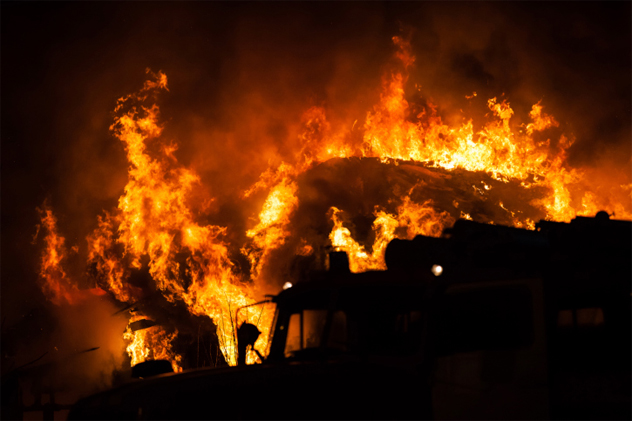
Fifty-two-year-old Clarence Roberts was one of the most prominent citizens in the small town of Nashville, Indiana. On the evening of November 18, 1970, a garage on his property was destroyed in a fire, and the badly burned body of a man was found at the scene. He was tentatively identified as Clarence, but the story soon became a lot more complex. Clarence’s wife, Geneva, was slated to receive a substantial life insurance payout for her husband’s death, but suspicion grew that the dead man was not actually Clarence. The victim had a different blood type, and even though Clarence’s ring was later found among the debris, it showed no signs of heat damage and appeared to have been planted there. Geneva never received the life insurance money, and on November 29, 1980, she would be killed when a fire engulfed her home. Incredibly, she was found next to the burned body of a man believed to be the actual Clarence Roberts.
Shortly before the first fire in 1970, Clarence had been suffering from serious financial problems. The day before his supposed “death,” Clarence was seen around town with an unidentified transient. It is theorized that Clarence may have murdered this man and used his body to fake his own death. Clarence’s plan would have been to disappear and start a new life once Geneva cashed in on his life insurance policy. Throughout the decade, there were numerous sightings of Clarence and it seems possible that once he realized his wife would not collect the money, he decided to kill both her and himself in a murder-suicide. However, speculation remains that an unknown third party started the fire which killed Clarence and Geneva, leaving this bizarre case with more questions than answers.
8 The Murder Of Evelyn Wagler
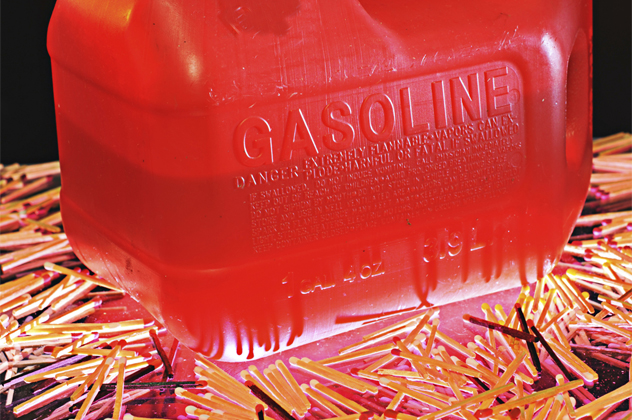
In the fall of 1973, 24-year-old Evelyn Wagler separated from her husband and child and moved from Chicago to Boston. On the evening of October 2, Evelyn was only two blocks away from her home when her car ran out of gas and she was forced to walk in the opposite direction to the nearest service station. Evelyn filled up a can with gasoline and was carrying it back to her car when she was suddenly accosted by six teenagers who dragged her into an alley and forced her to pour the gasoline on herself. After she complied, the teenagers lit a match and set Evelyn on fire before running away.
After Evelyn rolled on the ground to put out the flames, she struggled to make it to a nearby store to summon medical attention. She was taken to a hospital and died a few hours later, but managed to tell police that three of her attackers had recently made threats for her to move out of the neighborhood. There was a lot of controversy over the incident because a Burt Reynolds movie named Fuzz had aired on television a few days before the murder, and its plot involved a killer dousing homeless people with gasoline before burning them alive. It was believed that Evelyn’s attackers may have gotten the idea from the movie. In spite of the mass media attention that this horrible crime received, the six teenagers who burned Evelyn Wagler alive were never found.
7 The Disappearance Of Joey Lynn Offutt
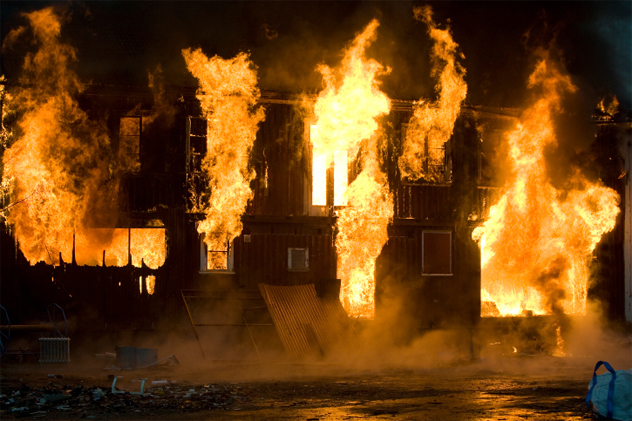
In July 2007, 33-year-old Joey Lynn Offutt was taking care of her newborn son at her home in Sykesville, Pennsylvania. The child was only six weeks old, but Joey was currently separated from his father. In the early morning hours of July 12, there was a loud explosion at Joey’s house and it caught on fire. Once the fire was taken care of, the remains of Joey’s infant son were found in a bathtub, but Joey herself was nowhere to be found. It was soon confirmed that the fire had been started with an accelerant, so this was clearly a case of arson.
The last verified sighting of Joey was on July 4, but no one could confirm seeing her at all during the week leading up to the fire. Joey’s vehicle was also missing, so it was initially suspected that she might have killed her son and started the fire before running away. However, on July 15, Joey’s abandoned car was discovered several hours away in State College. It was parked at an apartment complex where Joey had previously lived, but the manner in which the car was parked has led her family to believe that she did not leave the vehicle there herself. It’s still unknown if Joey Lynn Offutt was responsible for the fire and the death of her infant son, but there has been no trace of her for nearly seven years.
6 The Myojo 56 Fire
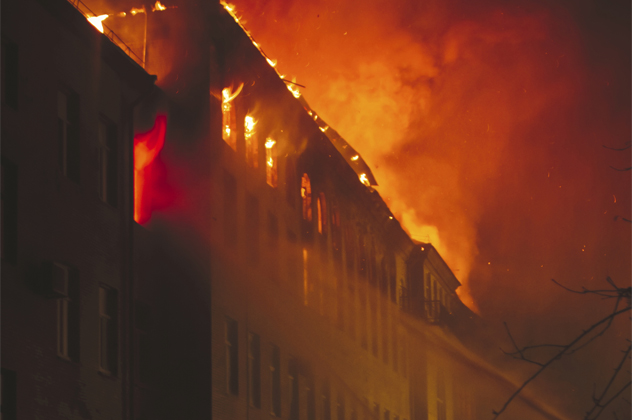
One of the most prominent neighborhoods in Tokyo is Kabuchiko, which is known as the city’s red-light district and is home to prostitution, gambling, and the yakuza. Myojo 56, a four-story building in Kabuchiko which was rumored to be a haven for illegal gambling activity, became the site of a horrific tragedy in the early morning hours of September 1, 2001. Sometime after 1:00 AM, there was a sudden explosion and flames instantly engulfed the two top floors of the building. In the end, 44 people would lose their lives.
Right from the outset, there were rumors that the explosion was somehow connected to organized crime. Myojo 56’s mah-jongg parlor was believed to be an illegal gambling den and had been completely destroyed by the fire. However, the authorities surprised everyone by announcing that arson was likely not the cause of the blaze. Instead, the primary focus was on the criminal negligence of the building’s owners.
In February 2003, six members of the Myojo Kosan Group were charged with violations of Japan’s Fire Services Law. It was discovered that Myojo 56 had numerous fire-code violations, as the fire doors were not properly maintained and the emergency stairwells were cluttered with items which might have prevented some of the victims from escaping. The case dragged through the courts for years and was not resolved until July 2008, when five of the six defendants were convicted of negligence and given suspended prison sentences. Literally one day after the ruling, the authorities suddenly reversed their original position and announced that arson was the cause of the fire after all. They claimed that an unidentified injured man seen near the building on the night of the fire was the prime suspect, but despite the renewed interest in the case, the Myojo 56 fire remains unsolved.
5 The Ohio State Rooming House Fire
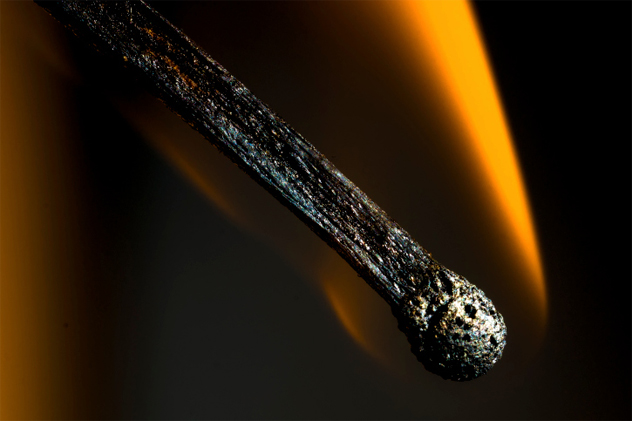
In 2003, Kyle Raulin and Alan Schlessman, two students from Ohio State University, lived in a rooming house near the campus. April 13 happened to be Alan’s 21st birthday, and approximately 80 people were attending a party at the house that night to celebrate. Three of the attendees were Ohio University students Erin DeMarco, Andrea Dennis, and Christine Wilson. Late in the evening, the party was winding down when an unknown arsonist used an accelerant to set fire to a couch on the rooming house’s porch. The fire soon ripped through the building, and the five aforementioned students perished in the blaze. The community was shocked by this seemingly senseless and motiveless crime.
Four months later, police arrested 20-year-old Robert “Lucky” Patterson, a drifter who was known for hanging around the campus area. He had reportedly made statements incriminating himself in the crime and had been seen in the area stealing car stereos on the night of the fire. He had also gotten into a confrontation with someone in the parking lot behind the rooming house. However, Patterson was only in custody for 11 days before prosecutors decided to drop the charges against him due to lack of evidence. Patterson remains a person of interest, but even though he has frequently had brushes with the law and been in and out of prison on numerous occasions, there is still no definitive proof that he was the perpetrator. Over a decade later, there are still no answers to the question of who started the Ohio State rooming house fire.
4 The Disappearance Of Edward Maps

On the evening of June 21, 1962, firefighters arrived at a burning home in Stroudsburg, Pennsylvania. They found the unconscious body of 22-year-old Christine Maps and her four-month-old daughter, Julie, who had died of smoke inhalation. Christine also appeared to be suffering from severe head injuries after being struck by a blunt instrument, and she died at the hospital a few hours later. Conspicuously absent from the scene was her 39-year-old husband, Edward Maps. This was clearly a case of arson, as the oven had been set to 450 degrees and the door left open before the fire was started. Even though Edward’s two vehicles had been left behind, he became the prime suspect in the murders of his family.
Maps was a prominent figure in the Pennsylvania art world, but had always suffered from mental issues. The crime was particularly baffling since the Maps family had visited a neighbor less than two hours before the fire and appeared to be in good spirits. Nevertheless, Edward Maps was added to the FBI’s Ten Most Wanted List, and there were several unofficial sightings of him over the years.
However, in 1967, the Monroe County district attorney requested that Maps be removed from the list. He was legally declared dead in 1971 and his entire file was reportedly destroyed by the FBI. No explanation was ever given for any of these actions. Two days after the fire, an acquaintance allegedly received a phone call from Maps, where he implied that his father-in-law, Robert Wolbach, was the real culprit. Wolbach supposedly despised Maps, and there were some discrepancies with his alibi on the night of the crime. However, Edward Maps was never found, so the full truth behind the murders remains murky.
3 The Himatangi Murders

One of the most horrific unsolved crimes in the history of New Zealand took place in Himatangi, a small settlement near the town of Foxton. A 47-year-old farmer named Thomas Wright lived in a small farmhouse with his wife, Katherine, and his four children, Joyce, Brian, Aileen, and Prudence. The property was owned by 62-year-old John Brown Westlake, and a young farmhand named Samuel Hewitt Thompson also lived there. In September 1929, they would all wind up dead after the farmhouse burned to the ground. When the authorities arrived, Westlake’s charred body was found near the doorway, but the remains of the other victims were scattered all over the place. Foul play and arson were suspected once an adult male skull fragment was found with a bullet hole in it.
A shotgun belonging to Westlake was found among the debris, but could not be positively identified as the murder weapon. Thomas Wright had suffered from financial troubles in the years preceding the fire and was forced to move his family onto Westlake’s property to work as a share-milker. Since Westlake was known as a bit of a taskmaster, it was speculated that Thomas might have murdered him and everyone else before starting the fire and turning the gun on himself. However, the position of the bullet hole in the skull fragment made it impossible for it to have been a self-inflicted gunshot wound. The problem was that it could not be conclusively determined whether the skull fragment actually belonged to Thomas Wright or Samuel Hewitt Thompson.
Even though an extensive investigation was conducted by the authorities, there was very little evidence to work with and no other potential suspects were identified, so this case is destined to forever remain a baffling unsolved mystery.
2 The UpStairs Lounge Fire
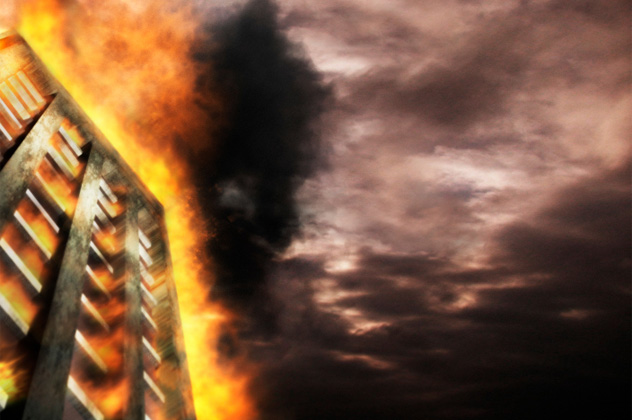
The UpStairs Lounge was a prominent gay bar in the French Quarter of New Orleans, located on the second floor of a three-story building. June 24, 1973, was the final day of Pride Weekend in the city, and approximately 60 members of Los Angeles’ Metropolitan Community Church—the only gay church in the United States at that time—were attending a get-together in the Lounge. That evening, the downstairs buzzer was heard, but when one of the patrons attempted to answer the door, he was shocked to see that the staircase was engulfed in flames. The patrons made a desperate attempt to escape, but the fire quickly spread upstairs. In the end, a total of 32 people lost their lives in the disaster.
Since an empty can of lighter fluid was found on the stairwell, arson was immediately suspected. The prime suspect was a local hustler named Rodger Nunez. Nunez had been frequenting the UpStairs Lounge shortly before the fire started, but was ejected after getting into a fight with another patron. He reportedly said, “I’m gonna burn you all out,” before he left. Nunez was questioned by police on numerous occasions, but always maintained his innocence. However, one of Nunez’s friends stated that he would often get drunk and confess to starting the fire, but recant once he became sober again. Nunez committed suicide in November 1974, and even though it was never officially confirmed that he was responsible for the fire, the case was officially closed in 1980.
1 Our Lady Of The Angels School Fire
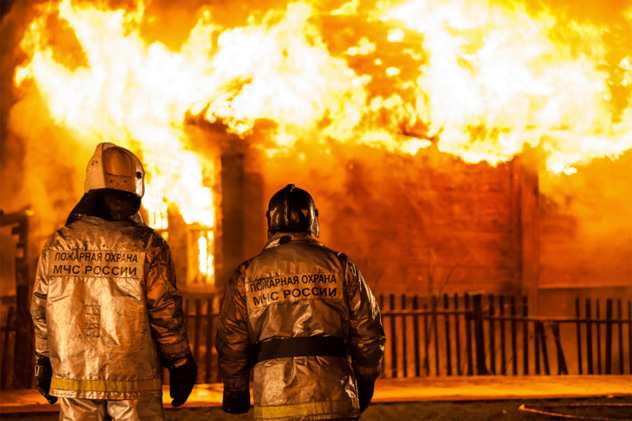
One of the most tragic fires of all time took place at Our Lady of the Angels School in Chicago on December 1, 1958. Sometime that afternoon, a fire started in a cardboard trash barrel at the bottom of the northeast stairwell. The fire burned undetected for at least half an hour and the heat eventually became so intense that it shattered a nearby window. This gave the fire a new oxygen supply and caused it to spread. Once the fire was discovered, an attempt was made to evacuate the school, but the flames spread too quickly and all the students and teaching nuns on the second floor had their only escape route cut off. They were forced to seek shelter in their classrooms and wait for the fire department to rescue them through the second-story windows. A total of 92 students and three nuns would lose their lives.
Some burnt matches were found in one of the school’s chapels, giving credence to the theory that this was arson. In 1962, a 13-year-old boy suspected of numerous fires in his neighborhood drew the attention of the authorities. This boy was a fifth-grade student at Our Lady of the Angels in 1958 and he would go on to confess to being responsible for the school fire. The boy had been excused from class to use the bathroom at approximately the same time the fire is believed to have started in the trash barrel, and he provided enough details about the fire to convince authorities. However, the boy eventually recanted his statements, claiming he had been coerced into signing his confession, so there was never enough evidence to pursue criminal charges against him. Officially, the cause of the fire at Our Lady of the Angels is still listed as “undetermined.”
Robin Warder is a budding Canadian screenwriter who has used his encyclopedic movie knowledge to publish numerous articles at Cracked.com. He is also the co-owner of a pop culture website called The Back Row and recently worked on a sci-fi short film called “Jet Ranger of Another Tomorrow.” Feel free to contact him here.
![10 Cases Of LGBTQ+ Persecution That Will Horrify You [DISTURBING] 10 Cases Of LGBTQ+ Persecution That Will Horrify You [DISTURBING]](https://listverse.com/wp-content/uploads/2019/10/proxy.duckduckgo-7-3-150x150.jpg)







